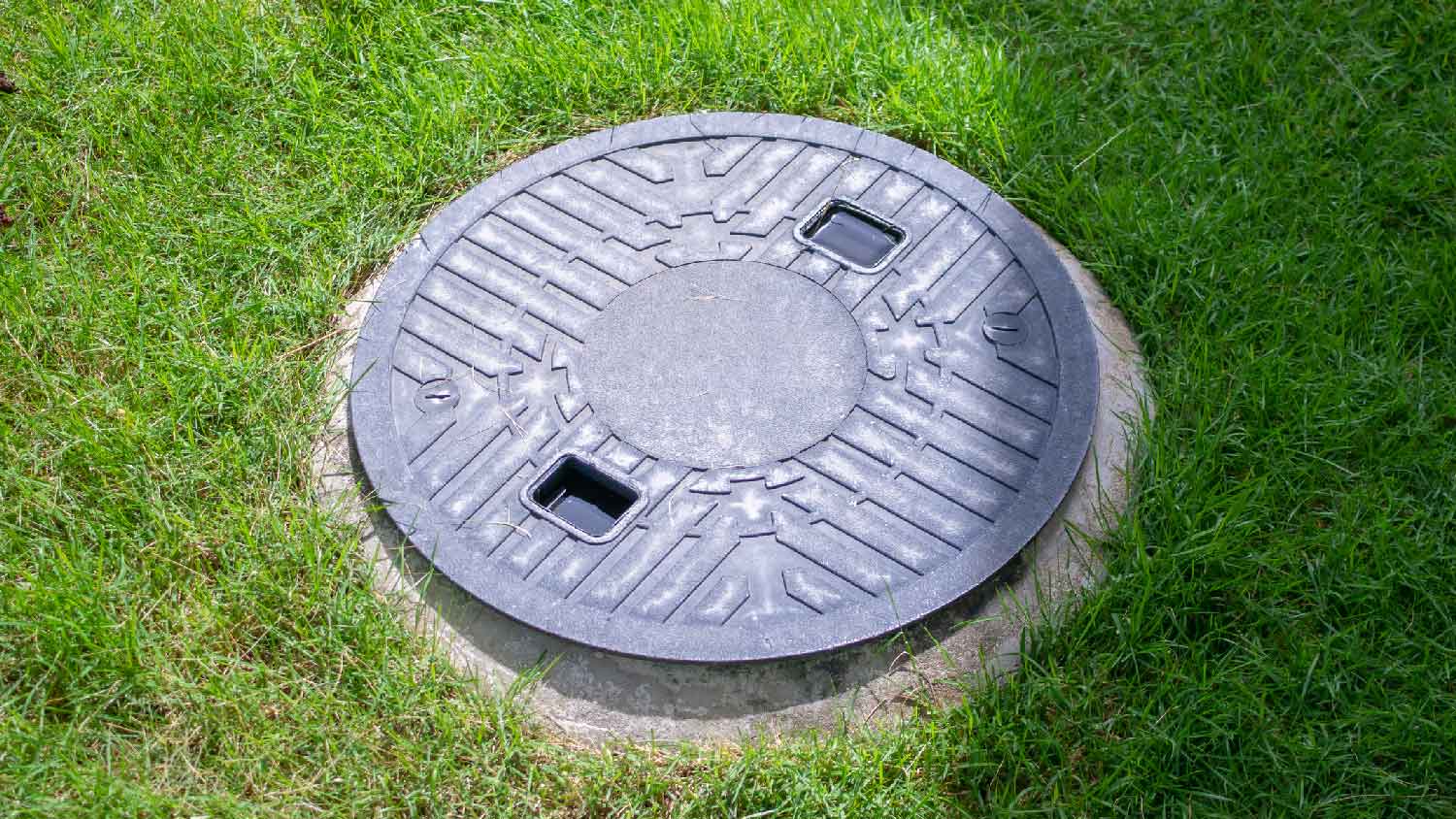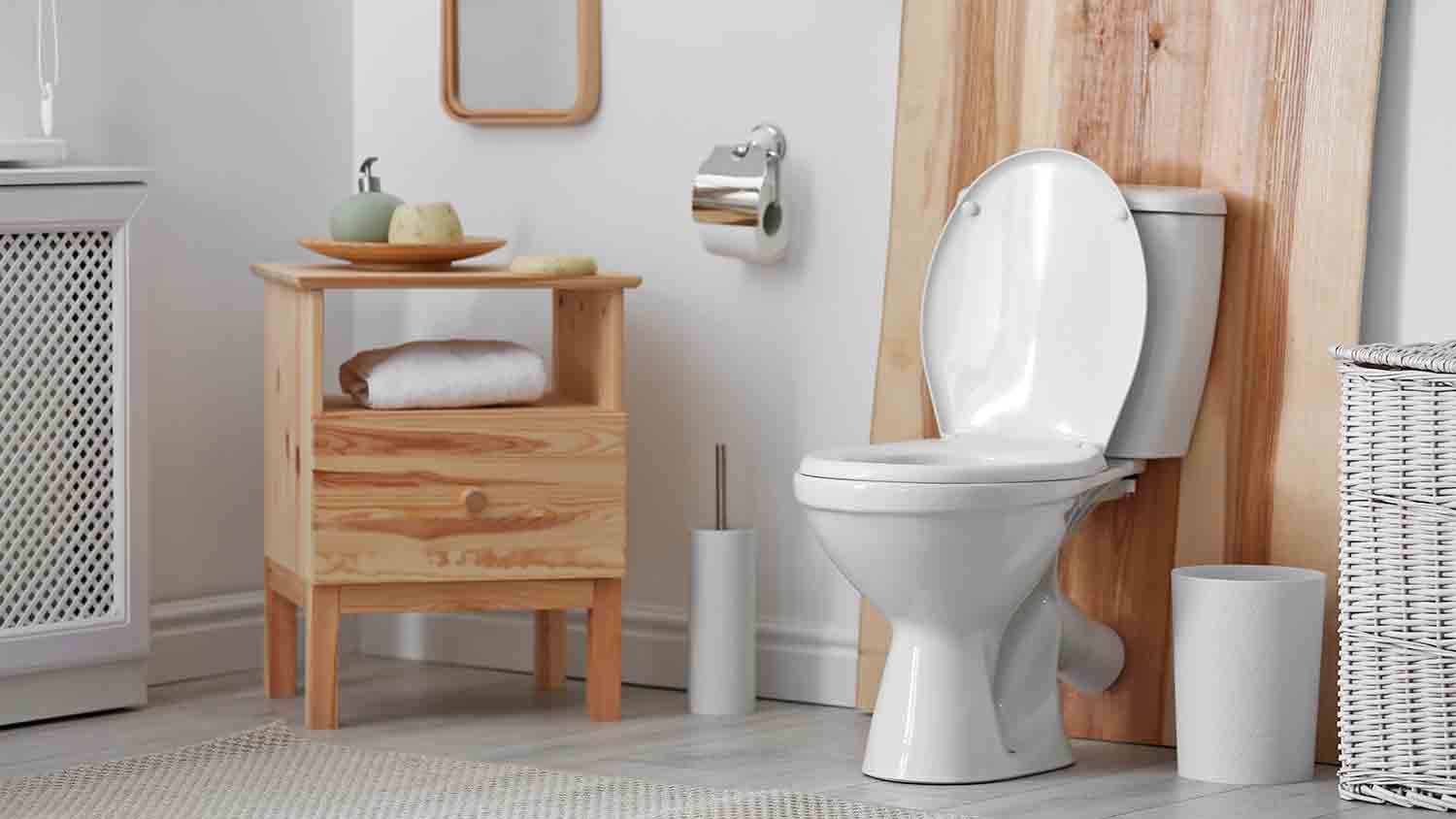
Concrete is one of the longest-lasting septic tank materials. Find out concrete septic tank prices for your wastewater management project.
Keep your home waste-free with this popular type of septic system


Anaerobic septic systems store and remove waste from your home.
They’re used in rural or suburban houses that don’t have public sewage access.
In an anaerobic system, household waste flows into a septic tank.
Anaerobic bacteria break down solid waste inside the tank.
Wastewater flows back into the soil outside through a system of pipes.
If you live in a rural area or somewhere that doesn’t have a public sewage system, you probably use a septic system to get rid of waste safely, but do you know much about how your septic system works? There are quite a few types of septic systems, with one of the most popular being the conventional anaerobic septic system. Whether you already have an anaerobic system or you’re considering installing one, here’s an overview of how they work, how they compare to other systems, and how to know if they’re right for your home.

An anaerobic septic system is a waste management system commonly used in rural and suburban homes. One of its central features is a watertight underground or above-ground septic tank, which collects waste from your sinks, showers, and toilets whenever you flush or let water run down the drain.
So, how does an anaerobic septic system work? Inside the tank, solid waste sinks to the bottom, while the liquid wastewater rises. The solid waste is broken down by anaerobic bacteria, which don’t require oxygen to live (which is where the name “anaerobic” comes from).
Wastewater, on the other hand, moves into a set of underground distribution pipes in an area known as the drain field or leach field. The wastewater slowly filters out into the soil through holes in the pipes.

Historically, anaerobic septic systems were the most common types of septic systems in the U.S. But these days, many people are choosing aerobic systems. Here are some of the differences between the two.
The main differentiator between anaerobic and aerobic septic systems is the presence of oxygen in the respective septic tanks, which impacts the type of bacteria inside.
As we’ve mentioned, anaerobic systems don’t have oxygen inside, so the bacteria that live there must be able to survive without it. But aerobic septic systems have an aerator feature that injects oxygen into the waste, where it’s broken down by aerobic (oxygen-consuming) bacteria.
Anaerobic systems aren’t as efficient as aerobic ones, so they require more piping and larger drain fields. If you don’t have a ton of space in your yard, an aerobic septic system might be a better option.
There’s also a stark price difference between the two. On average, anaerobic septic systems cost anywhere from $3,000 to $8,000, while aerobic systems are much pricier, costing between $10,000 and $20,000. Something else to keep in mind: The aerator in an aerobic septic system needs power to run, which can increase your operating costs.
According to data from Angi customers, 29% of homeowners don’t know if they need a permit for their septic tank installation. Similarly, 28% of homeowners know they need a permit for their project but don’t have one yet. Not sure where you stand? A septic tank pro can give you all the information you need before your installation starts.
If your home isn’t connected to the public sewer system, then you’ll likely use a septic system—but is an anaerobic system the right choice for your needs? Here are some pros and cons to consider.
On the plus side, anaerobic systems are usually more affordable than other types of septic systems, including aerobic, mound, and drip distribution systems. Unlike some other systems, they don’t need electrical power to run, which makes them more efficient and better for your wallet.
There are some potential drawbacks, as well. Anaerobic systems take up more space than some other kinds of septic systems because their pipes are designed to evenly distribute wastewater throughout the soil. So, if your property is small, an anaerobic septic system is not be the best choice for you.
Also, not every yard is suitable for an anaerobic septic system. If you’re considering an anaerobic system, your soil has to allow for quick percolation, or the process of treated wastewater absorbing into the soil. You need to hire a pro to do a perc test on your yard to check its percolation rate.
Septic systems play a critical role in your home by safely disposing of water and waste. To keep your system running smoothly (and avoid potentially pricey septic tank repairs), it’s important to take proper care of it. Here are a few tips to keep in mind.
Know what you can (and can’t) put into your septic system: Dealing with clogged toilets and backed-up drains is never fun. To prevent these types of problems, don’t put things like chemicals, paper towels, baby wipes, or personal hygiene products into your system. Basically, the only things that should go down your toilet are septic-safe toilet paper and human waste.
Pump your septic tank: Every three to five years, you should hire a plumber or septic tank pro to pump your septic tank. Regular pumping can help prevent waste from building up inside your tank, leaking out into your drain field, and backing up your pipes. Typically, a one-time septic tank pump costs around $400.
Look after your drain field: Keep your drain field free of any obstructions in case problems arise and a pro needs to access it. Also, keep all roof drains and downspouts pointed away from the field; otherwise, the field could soak up too much water and overflow.
Know when to call a pro: It’s best to have a professional septic inspection every few years. But you should also call a local septic tank company any time something seems off. Common signs of a septic system problem include backed-up plumbing, slow drainage, foul odors, and standing water in your drain field.
365 Kool arrived earlier than expected and priced me out fairly. The technician even notified me of other potential issues. This company truly cares!
Mayflower was an excellent choice for the complete renovation of my condominium. They knew exactly how to deal with the complexities of the condo building and management to make the project very smooth, easy and done right. From start to finish, everyone was incredibly helpful and their...
He requested I review his service, so I am following through. This week was the second service. I told him that our particular needs were that the trash cans in the living room, kitchen, and my bedroom be emptied. I explained what should go in recycling and which should go in garbage bin...
Reliable, trustworthy, efficient! I canâ t say enough about how pleased I am with the service this company offers. Highly recommend!
Exceptional quality of work, customer satisfaction oriented. I wanted to do interior work and was so impressed I asked for shingle roof and siding work on my home also, which came out very great. Any questions and concerns, Galaxy contractor answered my questions. Thank you guys.
My experience with this company did not start off 5 stars, but it certainly ended that way. Sam reached out to me and showed me that All Complete Construction does care about their customers. He listened to my complaints, understood my frustration, and went above and beyond to make it right....
Great service, great price, very knowledgeable.
Excellent sales staff and installer. Easy to work with. I appreciated that my current system was able to be activated and used.
Dave, Carl & Brandon provided excellent startup service. We were quite concerned about this unit -- we had no idea how long it had been since it was last in service, and if it was working, let alone dangerous! First Dave came and inspected the outside. Then a few days later, Carl & Brandon...
They responded to our call the next day. Chris, came out determined the septic tank was okay; just needed to be pumped. Our drain field was the real problem and a mess. (probably from previous landscaping work done a while back) Chris took measurements, planned out direction of new drain...
From average costs to expert advice, get all the answers you need to get your job done.

Concrete is one of the longest-lasting septic tank materials. Find out concrete septic tank prices for your wastewater management project.

Does your property have poor ground water or soil conditions? Learn about engineered septic system cost, types, and factors for you to consider.

Need to know what sewer line replacement costs in Baltimore, MD? This guide will help you prepare to budget for sewer line replacement done by local contractors.

A sewage smell outdoors is not only gross, but it indicates a possible health hazard. Learn how to get rid of the septic smell outside and when to call a pro.

How long do septic tanks last? It’s a valid question for those who have one. The answer is it varies between 15 and 50 years, depending on several factors.

In order to function properly, your septic tank needs to be regularly inspected and emptied. How often you should get your septic tank inspected depends on a few factors.